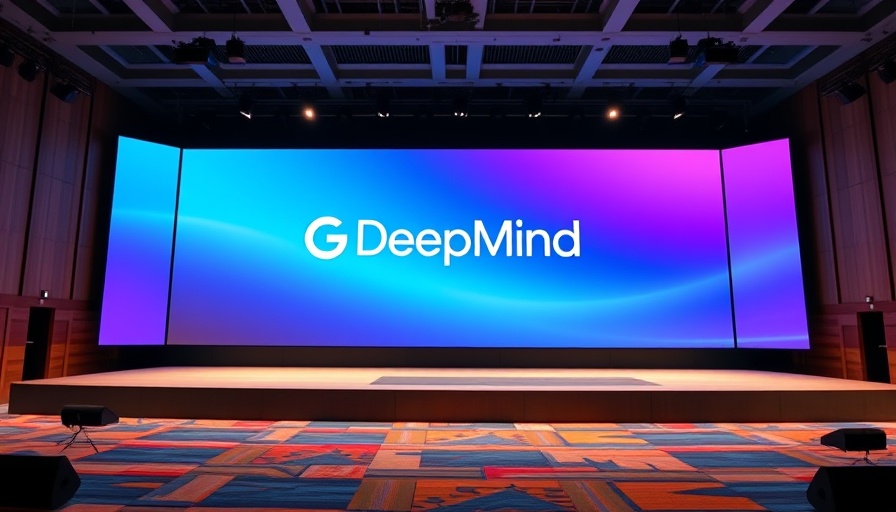
Gurucul's AI-SOC Analyst: Transforming Cybersecurity with Human-AI Collaboration
In an era where cyber threats are continuously evolving, Gurucul's newly launched AI-SOC Analyst is positioned as a groundbreaking advancement in security operations. By combining the capabilities of artificial intelligence with human intuition, this innovative tool possesses the power to revolutionize how Security Operations Centers (SOCs) respond to threats. It effectively automates the triage of alerts, reducing the mean time to resolution (MTTR) by an impressive 83%, easing the burden on overwhelmed security analysts.
Understanding the Mechanics Behind the AI-SOC Analyst
The AI-SOC Analyst mimics the problem-solving strategies of seasoned human analysts. It does not merely collect data; it diligently investigates alerts, draws context from multiple sources, and prioritizes responses based on urgency and risk. This depth of engagement ensures a well-rounded approach to cybersecurity, supplementing human efforts instead of replacing them, a common misconception about AI in security.
Key Benefits in Cyber Threat Management
The launch of this AI tool introduces numerous benefits for organizations grappling with the relentless pace of cyber threats:
- 24/7 Vigilance: The AI-SOC Analyst operates around the clock, handling alerts continuously without suffering from fatigue or the need for breaks—an essential quality given the increasing volume and sophistication of cyber threats.
- Faster Response Times: By allowing investigations to be completed in seconds rather than hours, the technology dramatically decreases both the mean time to detection (MTTD) and MTTR, enabling teams to react more swiftly to serious incidents.
- Enhanced Consistency: The AI uses consistent logic to analyze threats, eliminating human error and offering unbiased decision-making, crucial in today’s fast-moving threat landscape.
- Noise Reduction: It filters out false positives, highlighting only high-fidelity, actionable threats that warrant attention, thereby aiding analysts in focusing on more significant issues.
- Cost Efficiency: It allows for the simultaneous triage of thousands of alerts, optimizing team resources and limiting the need for an extensive workforce specifically for basic triage, ultimately lowering operational costs.
The Role of Generative AI in SOC Operations
Complementing the AI-SOC Analyst is Gurucul's Sme AI copilot, which utilizes Generative AI. This copilot aids analysts by interpreting complex data more effectively, summarizing threat intelligence in digestible language, suggesting queries, and even recommending next steps in investigations. Such capabilities not only streamline workflows but also enhance the productivity of cybersecurity personnel, enabling them to focus on strategic planning rather than mundane alerts.
Cultural Shift in Cybersecurity
The introduction of the AI-SOC Analyst signifies a broader cultural transformation within cybersecurity sectors. It addresses prevalent issues such as analyst burnout and alert fatigue that plague many SOC teams today. As Saryu Nayyar, Gurucul's CEO, articulated, this tool allows human analysts to concentrate on higher-value work by alleviating the repetitive tasks that drain motivation and resources. This shift toward more meaningful engagement can have profound implications for employee satisfaction and retention in cybersecurity roles.
How Will This Shape the Future of Cybersecurity?
As threats become more complex and pervasive, the integration of AI into security operations is likely to become more common. The Gurucul AI-SOC Analyst is not just an innovation; it represents a paradigm shift in how organizations can tackle cyber threats effectively. Future predictions suggest that as AI tools become more sophisticated, we may witness a further decrease in incident response times and a notable improvement in overall cybersecurity posture.
Challenges and Considerations Ahead
Despite the clear benefits, the rise of AI in cybersecurity also raises questions regarding transparency and accountability. Organizations will need to strike a balance between leveraging AI capabilities and maintaining ethical standards, ensuring that the technology is used responsibly. Ongoing evaluations of AI performance and thorough auditing practices will be essential in ensuring reliable operations.
Conclusion: The Path Forward in Cybersecurity
Gurucul’s AI-SOC Analyst illustrates the transformative potential of AI in enhancing threat response capabilities. By integrating human intelligence with artificial systems, organizations can better navigate the complexities of cyber threats. As the field continues to evolve, it is crucial for entities to stay informed and adaptable, leveraging innovative tools while maintaining ethical practices in cybersecurity.
 Add Row
Add Row  Add
Add 




Write A Comment